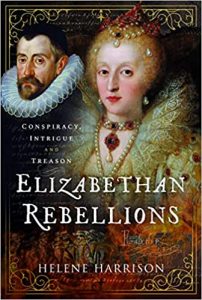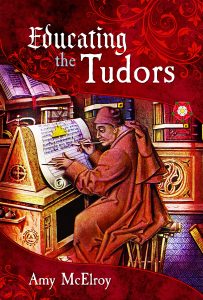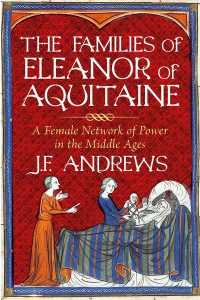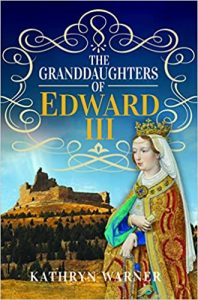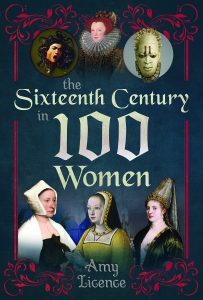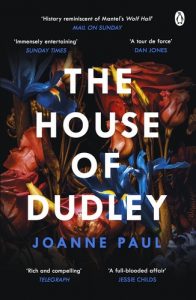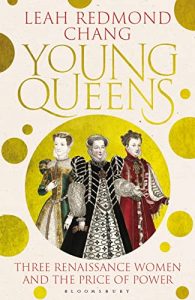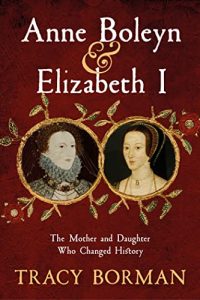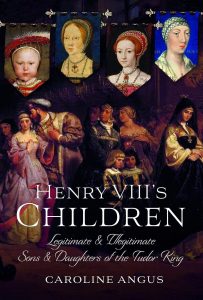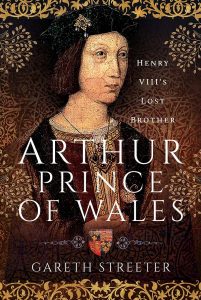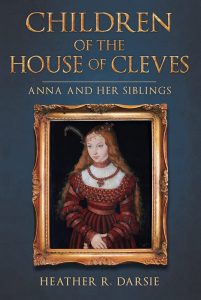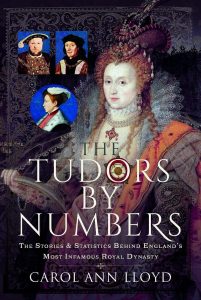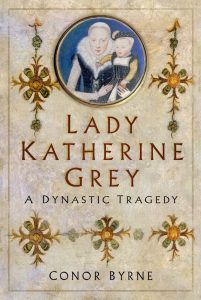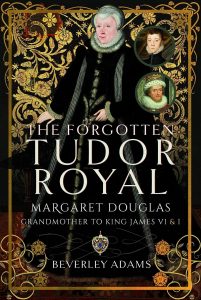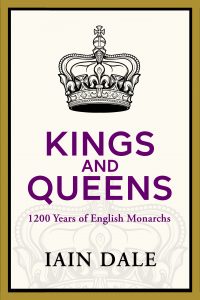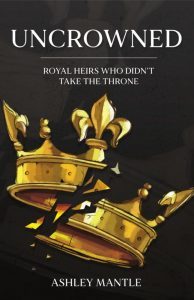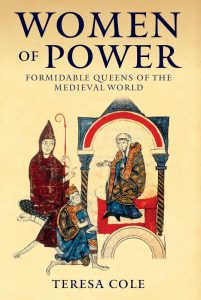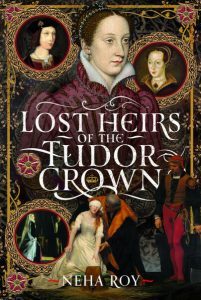30 January – Elizabethan Rebellions: Conspiracy, Intrigue and Treason by Helene Harrison
‘Elizabeth I. Tudor, Queen, Protestant. Throughout her reign, Elizabeth I had to deal with many rebellions which aimed to undermine her rule and overthrow her. Led in the main by those who wanted religious freedom and to reap the rewards of power, each one was thwarted but left an indelible mark on Queen Elizabeth and her governance of England. Learning from earlier Tudor rebellions against Elizabeth’s grandfather, father, and siblings, they were dealt with mercilessly by spymaster Francis Walsingham who pushed for the execution of Mary Queen of Scots due to her involvement, and who created one of the first government spy networks in England. Espionage, spying and hidden ciphers would demonstrate the lengths Mary was willing to go to gain her freedom and how far Elizabeth’s advisors would go to stop her and protect their Virgin Queen. Elizabeth I and Mary Queen of Scots were rival queens on the same island, pushed together due to religious intolerance and political instability, which created the perfect conditions for revolt, where power struggles would continue even after Mary’s death. The Elizabethan period is most often described as a Golden Age; Elizabeth I had the knowledge and insight to deal with cases of conspiracy, intrigue, and treason, and perpetuate her own myth of Gloriana.’
Further details – Pen and Sword
Further details – Amazon.co.uk
30 January – Educating the Tudors by Amy McElroy
‘Education during the Tudor era was a privilege and took many forms including schools, colleges and apprenticeships. Those responsible for delivering education came from a variety of backgrounds from the humble parish priest to the most famed poet-laureates of the day. Curriculums varied according to wealth, gender and geography. The wealthy could afford the very best of tutors and could study as much or as little as they chose whilst the poorer members of society could only grasp at opportunities in the hopes of providing themselves with a better future. The Tudors were educated during a time when the Renaissance was sweeping across Europe and Henry VIII became known as a Renaissance Prince but what did his education consist of? Who were his tutors? How did his education differ to that of his elder brother, Prince Arthur and how did Henry’s education change upon the death of his brother? There is no doubt Henry was provided with an excellent education, particularly in comparison to his sisters, Margaret and Mary. Henry’s own education would go on to influence his decisions of tutors for his own children. Who had the privilege of teaching Henry’s children and did they dare to use corporal punishment? Educating the Tudors seeks to answer all of these questions, delving into the education of all classes, the subjects they studied, educational establishment and those who taught them.’
Further details – Pen and Sword Books
Further details – Amazon.co.uk
16 February – The Families of Eleanor of Aquitaine: A Female Network of Power in the Middle Ages by J F Andrews
‘The lives of the sons of Eleanor of Aquitaine are the stuff of legend. Her daughters, however, are less well known, and the fascinating personalities of her daughters-in-law have been almost entirely overlooked, as have those of the daughters she bore Louis VII of France.The Families of Eleanor of Aquitaineredresses this balance and showcases the lives, travels and careers of these ten very different women, who formed a great international network of political alliances that linked their parents, siblings, husbands and children all across Europe and the Holy Land.
Some of these women found happiness; others endured lives of turmoil and conflict. Some of them were close; others never met. But two things linked them all: their connection to Eleanor and to the kingdoms over which she reigned – and their determination to exert authority on their own terms in a male-dominated world.’
Further details – The History Press
Further details – Amazon.co.uk
28 February – The Granddaughters of Edward III by Kathryn Warner
‘Edward III may be known for his restoration of English kingly authority after the disastrous and mysterious fall of his father, Edward II, and eventual demise of his mother, Queen Isabella. It was Edward III who arguably put England on the map as a military might. This show of power and strength was not simply through developments in government, success in warfare or the establishment of the Order of the Garter, which fused ideals of chivalry and national identity to form camaraderie between king and peerage. The expansion of England as a formidable European powerhouse was also achieved through the traditional lines of political marriages, particularly those of the king of England’s own granddaughters. This is a joint biography of nine of those women who lived between 1355 and 1440, and their dramatic, turbulent lives. One was queen of Portugal and was the mother of the Illustrious Generation; one married into the family of her parents’ deadly enemies and became queen of Castile; one became pregnant by the king of England’s half-brother while married to someone else, and her third husband was imprisoned for marrying her without permission; one was widowed at about 24 when her husband was summarily beheaded by a mob, and some years later bore an illegitimate daughter to an earl; one saw her marriage annulled so that her husband could marry a Bohemian lady-in-waiting; one was born illegitimate, had sixteen children, and was the grandmother of two kings of England.’
Further details – Pen and Sword
Further details – Amazon.co.uk
13 March – The Sixteenth Century in 100 Women by Amy Licence
‘This retelling of the sixteenth century introduces the reader to a gallery of amazing women, from queens to commoners, who navigated the patriarchal world in memorable and life-changing ways. Amy Licence has scoured the records from Europe and beyond to compile this testament to female lives and achievements, telling the stories of mistresses and martyrs, witches and muses, pirates and jesters, doctors and astronomers, escapees and murderesses, colonists and saints. Read about the wife of astrologer John Dee, the women who inspired Michelangelo, the jester who saved the life of Henry IV of France, the beloved mistress of the Sultan Suleiman the Great, the wife of Ivan the Terrible, whose murder unleashed terror, set against the everyday lives of those women who did not make the history books. Introducing a number of new faces, this book will delight those who are looking to broaden their knowledge on the sixteenth century and celebrate the lost women of the past.’
Further details – Amazon.co.uk
6 April – Edward VI: Henry VIII’s Overshadowed Son by Stephanie Kline
‘For too long, King Edward VI has been pushed to the very edges of Tudor history – overlooked in favour of some of the more vibrant personalities of his family members, such as Henry VIII and Elizabeth I. Known as the ‘boy king’ of the Tudor dynasty, he is often remembered for little more than the ambitious councillors who governed England during his minority. His reign, however, and the significant religious changes that took place as he furthered the Protestant Reformation in England, had great influence over the remaining decades of the Tudor period and even modern Britain as we know it today. ‘Boy king’ though he may have been, Edward VI and his government were more significant to the history of England than he is often given credit for, and it is long past time for careful and thoughtful study of his life and reign. Edward VI: Henry VIII’s Overshadowed Son aims to reopen the pages of his story, arguing that however brief it may have been, Edward VI’s reign had lasting impacts on the religious landscape in England, and is certainly a Tudor reign worth remembering.’
Further details – Pen and Sword
Further details – Amazon.co.uk
4 May – The House of Dudley: A New History of Tudor England’ (paperback) by Joanne Paul
‘Each Tudor monarch made their name with a Dudley by their side – or by crushing one beneath their feet . . .
The Dudleys thrived at the court of Henry VII, but were sacrificed to the popularity of Henry VIII. Rising to prominence in the reign of Edward VI, the Dudleys lost it all by advancing Jane Grey to the throne over Mary I.
That was until the reign of Elizabeth I, when the family were once again at the centre of power, and would do anything to remain there . . .
With three generations of felled favourites, what was it that caused this family to keep rising so high and falling so low?
Here, for the first time, is the story of England’s Borgias, a noble house competing in the murderous game of musical chairs around the English throne. Witness cunning, adultery and sheer audacity from history’s most brilliant, bold and skulduggerous family.
Welcome to the House of Dudley.’
Further details – Amazon.co.uk
Further details – Amazon.co.uk
11 May – Young Queens: Three Renaissance Women and the Price of Power by Leah Redmond Chang
‘Sixteenth-century Europe: Renaissance masters paint the ceilings of Florentine churches, kings battle for control of the Continent, and the Reformation forever changes the religious organisation of society. Amidst it all, three young women come of age and into power in an era of empires and revolutions.
Catherine de’ Medici’s story begins in a convent stormed by soldiers intent on seizing the key to power in Florence – Catherine herself, a girl barely 11 years old. It ends with her as the controversial queen mother of France, a woman both revered and reviled.
Mary, Queen of Scots’ story begins in Scotland and ends in England. A queen turned traitor, from the confines of her English prison she longs for the idyll of her childhood in France.
Elisabeth de Valois’ story begins in France, where she is born the beloved daughter of a king. It ends tragically in Spain as a cherished queen consort and mother – one who must make the ultimate sacrifice for her kingdom.
Catherine, Mary and Elisabeth lived at the French court together for many years before scattering to different kingdoms. These years bound them to one another through blood and marriage, alliance and friendship, love and filial piety; bonds that were tested when the women were forced to part and take on new roles. To rule, they would learn, was to wage a constant war against the deeply entrenched misogyny of their time. A crown could exalt a young woman. Equally, it could destroy her.
Drawing on new archival research, Young Queens masterfully weaves the personal stories of these three queens into one, revealing their hopes, dreams, desires and regrets in a time when even the most powerful women lived at the mercy of the state.’
Further details – Bloomsbury Publishing
Further details – Amazon.co.uk
18 May – Anne Boleyn & Elizabeth I: The Mother and Daughter Who Changed History by Tracy Borman
‘One of the most extraordinary mother and daughter stories of all time – Anne Boleyn, the most famous of Henry VIII’s wives and her daughter Elizabeth, the ‘Virgin Queen’.
Anne Boleyn is a subject of enduring fascination. By far the most famous of Henry VIII’s six wives, she has inspired books, documentaries and films, and is the subject of intense debate even today, almost 500 years after her violent death. For the most part, she is considered in the context of her relationship with Tudor England’s much-married monarch. Dramatic though this story is, of even greater interest – and significance – is the relationship between Anne and her daughter, the future Elizabeth I.
Elizabeth was less than three years old when her mother was executed. Given that she could have held precious few memories of Anne, it is often assumed that her mother exerted little influence over her.
But this is both inaccurate and misleading. Elizabeth knew that she had to be discreet about Anne, but there is compelling evidence that her mother exerted a profound influence on her character, beliefs and reign. Even during Henry’s lifetime, Elizabeth dared to express her sympathy for her late mother by secretly wearing Anne’s famous ‘A’ pendant when she sat for a painting with her father and siblings.
Piecing together evidence from original documents and artefacts, this book tells the story of Anne Boleyn’s relationship with, and influence over her daughter Elizabeth. In so doing, it sheds new light on two of the most famous and influential women in history.’
Further details – Amazon.co.uk
30 May – Henry VIII’s Children: Legitimate and Illegitimate Sons and Daughters of the Tudor King by Caroline Angus
‘Of the five Tudor monarchs, only one was ever born to rule. While much of King Henry VIII’s reign is centred on his reckless marriage choices, it was the foundations laid by Henry and Queen Katherine of Aragon that shaped the future of the crown. Among the suffering of five lost heirs, the royal couple placed all their hopes in the surviving Princess Mary. Her early life weaves a tale of promise, diplomacy, and pageantry never again seen in King Henry’s life, but a deep-rooted desire for a son, a legacy of his own scattered childhood, pushed Henry VIII to smother Mary’s chance to rule. An affair soon produced an unlikely heir in Henry Fitzroy, and while one child was pure royalty, the other illegitimate, the comparison of their childhoods would show a race to throne closer than many wished to admit. King Henry’s cruelty saw his heirs’ fates pivot as wives came and went, and the birth Princess Elizabeth, saw long-term plans upended for short-term desires. With the death of one heir hidden from view, the birth of Prince Edward finally gave the realm an heir born to rule, but King Henry’s personal desires and paranoia left his heirs facing constant uncertainty for another decade until his death. Behind the narrative of Henry VIII’s wives, wars, reformation and ruthlessness, there were children, living lives of education among people who cared for them, surrounded by items in generous locations which symbolised their place in their father’s heart. They faced excitement, struggles, and isolation which would shape their own reigns. From the heights of a surviving princess destined and decreed to influence Europe, to illegitimate children scattered to the winds of fortune, the childhoods of Henry VIII’s heirs is one of ambition, destiny, heartache, and triumph.’
Further details – Pen and Sword
Further details – Amazon.co.uk
30 May – Arthur, Prince of Wales: Henry VIII’s Lost Brother by Gareth Streeter
‘For too long, Arthur Tudor has been remembered only for what he never became. The boy who died prematurely and paved the way for the revolutionary reign of his younger brother, Henry VIII. Yet, during his short life, Arthur was at the centre of one of the most tumultuous periods of England’s history. At the time of his birth, he represented his father’s hopes for a dynasty and England’s greatest chance of peace. As he grew, he witnessed feuds, survived rebellion and became the focal point of an international alliance. From the threat of pretenders to West Country rebellions, the dramatic twists and turns of early Tudor England preoccupied Arthur’s thoughts. At a young age, he was dispatched to the Welsh border, becoming a figurehead for a robust regional government. While never old enough to exercise full power in his dominion, he emerged as a figure of influence, beseeched by petitioners and consulted by courtiers. While the extent of his personal influence can only be guessed at, the sources that survive reveal a determined prince that came tantalisingly close to forging his future. Eventually, after years of negotiation, delay and frustration, the prince finally came face to face with his Spanish princess, Katharine of Aragon. The young couple had shared a destiny since the cradle. Securing the hand of this prestigious bride for his son had been a centrepiece of Henry VII’s foreign policy. Yet, despite being 14 years in the making, the couple were to enjoy just five months together before Arthur succumbed to a mysterious illness. Arthur’s death at the age of 15 was not just a personal tragedy for his parents. It changed the course of the future and deprived England of one of the most educated and cultivated princes in its history. Arthur would never wear the crown of England. But few Princes of Wales had been better prepared to rule. ‘Arthur, Prince of Wales: Henry VIII’s lost brother’ shows that Arthur Tudor was more than a prince who died. He was a boy that really lived.’
Further details – Pen and Sword
Further details – Amazon.co.uk
15 June – Children of the House of Cleves: Anna and Her Siblings by Heather R Darsie
‘Children of the House of Cleves describes and analyses the lives of Sybylla, Anna, Wilhelm and Amalia, the children of Johann III, Duke of Cleves. Though their parents were staunch Catholics, Wilhelm of Jülich‑Cleves‑Berg was a Lutheran – when it suited him. He challenged the Holy Roman Emperor, Charles V, over the strategically important Duchy of Guelders. He believed that France would support him, but Francis I left him defenceless and Guelders became part of the Habsburg Netherlands. Sybylla became the Electress consort by marriage to electoral Prince Johann Friedrich of Saxony. He would be captured during the Schmalkaldic War, and Sybylla defended the city of Wittenberg under siege during his absence. Both she and her husband were passionate supporters of the Reformation. Amalia was considered as a possible bride for Henry VIII before he chose her sister Anna. She was a great lover of music and poetry, with her own poems recorded in a song book. These four children had an illustrious lineage – descended from both the kings of England and France and closely related to Louis XII and the dukes of Burgundy. Their various trials and triumphs illuminate the convulsions of sixteenth‑century continental and Tudor politics and the spiritual and civic revolution that was the Reformation. It began in the German states, and these four lives were intimately involved in it. Based upon primary documentary sources, Children of the House of Cleves explains what motivated or caused some of the largest wars in continental Europe in the run‑up to the Thirty Years War in Germany, a time of massive religious and political strife.’
Further details – Amazon.co.uk
30 June – The Tudors by Numbers: The Stories and Statistics Behind England’s Most Infamous Royal Dynasty by Carol Ann Lloyd
‘The Tudors by Numbers is a fresh look at a well-known dynasty ― through its numbers. Take a new look at old friends by learning the complicated path to 1 possible king symbolized by 1 rose, viewing the extraordinary 42 percent of the dynasty under the rule of 2 women, and considering the impact of 4 English language translations of the Bible printed in England. The Tudors by Numbers takes you behind the scenes through a different path and reveals new ways of seeing the Tudors.’
Further details – Amazon.co.uk
13 July – Lady Katherine Grey: A Dynastic Tragedy by Conor Byrne
‘In 1601, as the reign of Elizabeth I drew to a close, the civil lawyer Thomas Wilson identified the prevailing uncertainty over the English succession: ‘upon whose head it will fall is by many doubted’. During the first decade of the last Tudor monarch’s reign, however, Lady Katherine Grey, great-granddaughter of the first Tudor king, Henry VII, and sister of the ill-fated Lady Jane, was widely viewed as the heir to Elizabeth’s throne, especially by Protestants hostile to the prospect of a Catholic succession. This book proposes a re-examination of the life and legacy of Katherine Grey in the context of late sixteenth-century succession debates, sexual intrigue and Reformation politics. Katherine’s importance as a claimant to the throne of Elizabeth I will also be explored with regard to contemporary attitudes to female monarchy. While Katherine has usually been identified as a tragic figure, her significance as heiress to the crown, according to the last will and testament of Henry VIII, has perhaps been neglected given that Elizabeth was eventually succeeded by James VI of Scotland, son of the executed Mary, Queen of Scots. If the wishes of Henry had been followed, however, then it would surely have been Katherine’s eldest son, Edward, who became king of England in the spring of 1603.’
Further details – Amazon.co.uk
30 August – The Forgotten Tudor Royal: Margaret Douglas, Grandmother to King James VI & I by Beverley Adams
‘As the daughter and cousin of queens and the granddaughter and niece of kings, Lady Margaret Douglas was an integral part of the Tudor royal dynasty. A favourite of her uncle King Henry VIII and a close friend of Queen Mary I she courted scandal which saw her imprisoned in the Tower of London on more than one occasion. Against the orders of Queen Elizabeth I she plotted the marriage of her eldest son Lord Darnley to Mary, Queen of Scots with disastrous consequences. She came as close to the executioners block as she did to the throne of England, with some believing she had a right to be queen. A devout Catholic all her life, she lived at a time when religious division split the country in half yet she remained steadfast in her beliefs. A respected and revered lady on both sides of the border, Lady Margaret Douglas, later Countess of Lennox through her marriage, suffered much heartbreak and loss. Her husband and son were both murdered at the hands of the Scots and she outlived all her children. Despite these tragedies she never gave up on her dream of uniting the thrones of England and Scotland which was realised through her grandson King James VI/I. The story of her life is a remarkable tale of intrigue and survival and deserves to be more widely told.’
Further details – Amazon.co.uk
14 September – Kings and Queens: 1200 Years of English and British Monarchs by Iain Dale
‘The British monarchy is one of the oldest in the world – dating so far back that even its origins are the subject of debate. Was William the Conqueror the first king of England, or was it Alfred the Great? In this third instalment of the series that began with The Prime Ministers and The Presidents, Iain Dale charts this long history of the English and British monarchy, with 64 essays by journalists, historians and politicians on every individual to have sat on the throne, as well as some who didn’t.
From Alfred the Great to Charles III, each essay examines the monarch, their role and what they tell us about British history. Why has the British monarchy, unlike so many others, endured? Kings and Queens will attempt to answer this question, and many others, providing valuable insight into British history and how Britain is ruled today.’
Further details – Amazon.co.uk
23 September – Mid-Tudor Queenship and Memory: The Making and Re-making of Lady Jane Grey and Mary I edited by Valerie Schutte and Jessica S Hower
‘This book explores (mis)representations of two female claimants to the Tudor throne, Lady Jane Grey and Mary I of England. It places Jane’s attempted accession and Mary I’s successful accession and reign in comparative perspective, and illustrates how the two are fundamentally linked to one another, and to broader questions of female kingship, precedent, and legitimacy. Through ten original essays, this book considers the nature and meaning of mid-Tudor queenship as it took shape, functioned, and was construed in the sixteenth century as well as its memory down to the twenty-first, in literary, musical, artistic, theatrical, and other cultural forms. Offering unique comparative insights into Jane and Mary, this volume is a key resource for researchers and students interested in the Tudor period, queenship, and historical memory.’
Further details – Amazon.co.uk
15 November – Uncrowned: Royal Heirs Who Didn’t Take the Throne by Ashley Mantle
‘Through the centuries, succession to the English throne has largely been dictated by blood. Children were born to the role, their destinies entwined with that of the nation. They would be raised with the expectation that they would eventually take their place on the throne and rule the land. But not all those expected to wear the crown completed this journey. Ashley Mantle explores the lives of several heirs apparent, from the Norman Conquest to the present day, who were destined to assume the throne of England but, for one reason or another, did not. You will meet such figures as Robert Curthose, eldest son of William the Conqueror, whose ineptitude saw him twice barred from the crown; Edward V, whose disappearance in 1483 still remains a mystery; Lady Jane Grey, the tragic Nine Days Queen; and Sophia, Electress of Hanover, who died months before her accession. Along the way we will explore the nature of rule to determine what was expected of an heir and how an heir was groomed in preparation for their ascent, as well as how the rules surrounding the succession have changed over the centuries..’
Further details – Amazon.co.uk
15 December – Women of Power: Formidable Females of the Medieval World by Teresa Cole
‘The stereotypical medieval woman is a pious, helpless creature of little intelligence, and still less drive and ambition. Completely at the mercy of the men in her life, she was married young, had copious offspring and died, often in childbirth, to make way for another, younger model. At best she may have inspired music (made by men), art (made by men), or poetry (made by men), but clearly she were incapable of doing anything for herself. While this may have been true of many, it was certainly not true of the women featured here. Emma, Matilda and Eleanor were all queens of England wielding great influence in their time, while the Empress Matilda ruled northern Italy at the age of 16, and came close to seizing back the English crown, promised to her and then usurped by her cousin, Stephen. Matilda of Tuscany and Melisende of Jerusalem both ruled in their own right and with notable success. All these women had very clear ideas of what they wanted and how to get it, and all were prepared to use force to achieve their ends. They can truly be called formidable women of the Medieval World.’
Further details – Amazon.co.uk

